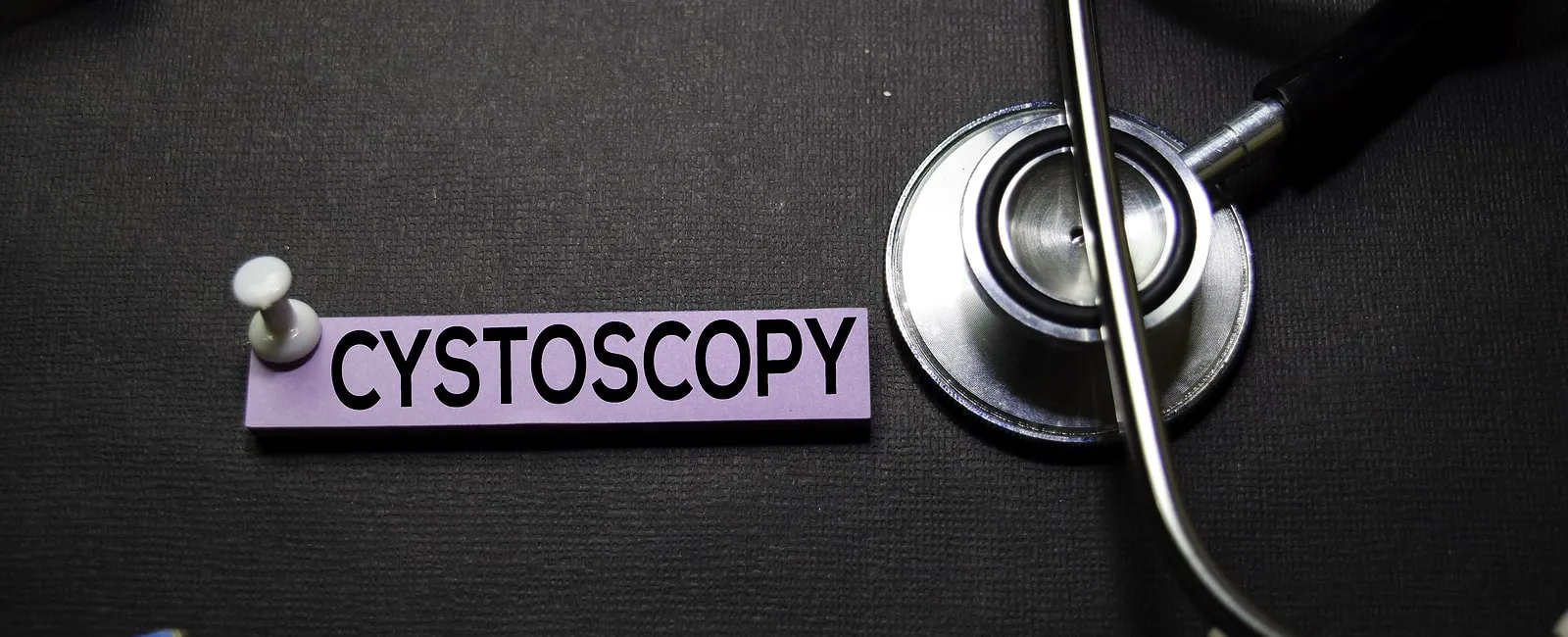A cystoscopy is a procedure your doctor can perform to check for potential causes of recurrent urinary tract infections and other problems with the urinary tract. Up to 40% of women who get one UTI will have at least one more within six months. If you have a blockage of the urinary tract, backflow of urine that is leading to complications or infections, or an abnormal pap smear, a cystoscopy can help identify what may be causing these problems.
What does a cystoscopy check for?
- Bladder cancer
- Polyps or overgrowth of tissue
- Bladder stones
- Tissue damage caused by frequent urinary tract infections (UTIs)
- Injury of the urinary tract
- Structural abnormalities of the urinary tract
In addition to diagnosing conditions, a cystoscopy can be used for treatments.
Kinds of cystoscopy treatments:
- Tumor removal
- Removal of blockages in your bladder and urethra
- Bladder stone removal
- Stopping bleeding in your bladder
How does a cystoscopy work?
A cystoscopy is an outpatient procedure where a small tube with a light and camera on the end, called a cystoscope, is guided through the urethra up into the bladder. The doctor can see the inside of the urethra and bladder during this procedure as well as guide additional instruments through the tube to perform tasks like wash out the inside of the bladder or resect a small piece of tissue for further examination. There are two kinds cystoscopy: rigid and flexible.
Rigid Cystoscopy vs Flexible Cystoscopy
Both a rigid and flexible cystoscopy are used to see the inside of your bladder. The main difference between the two approaches lie in whether your doctor will be using the cystoscopy to diagnose a condition or perform a procedure.
What is a flexible cystoscopy used for?
A flexible cystoscopy is used for evaluating the urethra and bladder and providing diagnosis. A flexible cystoscopy is typically an outpatient procedure and requires a local anesthetic instead of a general anesthetic. You generally can return home or back to work shortly after the procedure.
What is a rigid cystoscopy used for?
A rigid cystoscopy is used for performing procedures, such as resecting a tumor. A rigid cystoscopy usually requires general anesthesia and you will need to recover in the office after the procedure while the anesthesia wears off and you wake up. Someone will need to drive you home afterward.
Cystoscopy: What to expect at each step
Knowing what to expect at each step of a cystoscopy can help you be prepared and feel more comfortable with the procedure.
Before
Before you have a cystoscopy, your doctor will talk with you about the procedure and why they are performing it. Common questions patients have before a cystoscopy include:
What are my alternatives to cystoscopy?
In most cases, a cystoscopy provides the best visualization of the urethra and bladder for diagnosis. An MRI or CT can miss smaller details that a cystoscopy will be able to detect. A cystoscopy is also a minimally invasive approach to removing a tumor, bladder stone, or other blockage, compared to traditional surgery.
Is cystoscopy safe during pregnancy?
If you are pregnant or think you may be pregnant, make sure to tell your doctor. Every patient’s risks are unique, and your doctor will determine the safest approach for you and your baby during pregnancy.
Do you have to fast for a cystoscopy?
You typically do not need to fast before a flexible cystoscopy since it uses a local anesthetic. You will need to fast before a rigid cystoscopy since it requires a general anesthetic.
During
Having an idea of how long your procedure will take can help you mentally prepare for the day. Since every patient and procedure are different, your doctor will be able to give the best estimate on expected time for your procedure.
How long does it take to do a flexible cystoscopy?
A flexible cystoscopy generally only takes 5-10 minutes. However, it may take up to one hour to administer the local anesthetic and for the area to numb, prior to beginning the procedure.
How long does it take to do a rigid cystoscopy?
The procedure of a rigid cystoscopy typically takes 15-30 minutes, however the process of preparation, administering anesthesia, and waking up after the procedure can last several hours both before and after.
After
Recovery after a cystoscopy will depend on if you had a flexible or rigid cystoscopy, your reaction to the anesthesia, and the procedure that was performed. Pain is minimal and recovery is short after a flexible cystoscopy. After effects from a rigid cystoscopy can be more involved. You will need to have someone accompany you home after a rigid cystoscopy, will likely experience slight pain or discomfort and may have bleeding after your cystoscopy, especially if you had a blockage or tumor resected. Your doctor can recommend or prescribe pain medication to take after surgery, as well as guidelines for a safe recovery.
Talking with your doctor ahead of your cystoscopy, understanding how the procedure works, and knowing what to expect can help prepare you for an upcoming cystoscopy.
